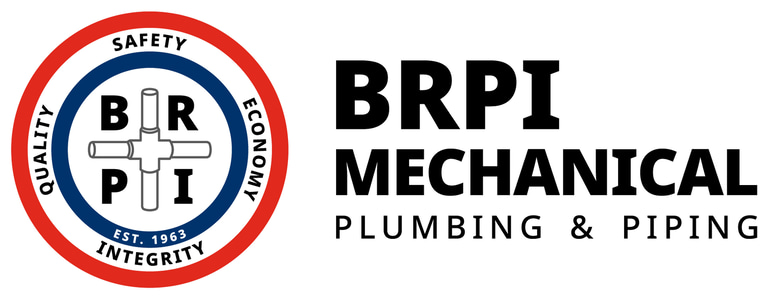Overwhelmed by Tankless Water Heater Choices? These FAQ Answers Cut Through the Chaos
WATER HEATERSRESIDENTIAL PLUMBINGFAQS
6/25/20255 min read


So, you’ve heard about tankless water heaters. You’ve clicked around online, maybe watched a few YouTube demos, and now your brain feels like it’s been submerged in lukewarm confusion. Are you supposed to go electric or gas? Is one brand better than another? What’s a rebate and why does it sound fake? And wait—how do you even pick the right size of a tankless water heater when there's no tank?
Welcome to the tankless jungle.
But don't worry—we brought the machete. This post is your shortcut through the chaos. We're going full myth-busting mode, tackling the biggest homeowner FAQs, and giving you straight-up answers, local insights, and a no-nonsense breakdown of everything from rebates to brands. Spoiler: Yes, we do have a favorite.
Let’s dive in.
💭 FAQ #1: Is a tankless water heater really better than a traditional tank?
Yes—but it depends on your needs. Here’s the deal:
Tankless water heaters don’t store hot water—they heat it on demand. This means endless hot showers, better energy efficiency, and more space in your utility room. Sounds dreamy, right? But it comes with a few trade-offs:
Higher upfront cost.
Gas line or electrical upgrades may be needed.
Hard water in Utah? You’ll want a water softener to prevent scaling issues.
Still, for households that use a lot of hot water or want a long-term solution, a tankless setup is a major upgrade.
⚖️ FAQ #2: Electric or gas? Which one should I choose?
Ah yes, the tankless water heater’s version of Coke vs. Pepsi. Except the stakes are your morning shower.
Here’s the unfiltered truth:
🔥 Gas Tankless Water Heaters:
Best for: Whole-house heating
Pros: High flow rates (up to 8+ gallons per minute), can run multiple appliances at once
Cons: Needs proper venting and usually a natural gas line upgrade
Gas is king when it comes to power. If your household has two bathrooms and more than one person who showers before work, gas is your only realistic choice.
⚡ Electric Tankless Water Heaters:
Best for: Point-of-use or small homes
Pros: Smaller, no venting required, slightly cheaper upfront
Cons: Lower volume capacity, may struggle with cold incoming water (especially in Utah winters)
In other words: electric is cute, but not if you’re trying to run a shower, dishwasher, and washing machine at the same time without causing a thermonuclear meltdown in your utility panel.
🏆 FAQ #3: What brands are actually worth it?
Let’s get real. We’re not getting paid to say this, and we don’t do sales gimmicks. But if we had to put our name behind one tankless brand every day of the week and twice on Saturdays?
Navien.
Here’s why:
Outstanding efficiency ratings
Excellent durability in hard water regions like Utah
User-friendly controls (even your dad could figure them out)
Consistently solid customer support
We’re not just fans—we’re certified Navien Service Specialists, which means we know these systems inside and out. Other brands we’ve seen work well include Rinnai and Noritz, but Navien is the one we see go the distance in Utah homes.
This isn’t sponsored. We just believe in recommending what we’d install in our own homes.
📏 FAQ #4: How do I size a tankless water heater? Is there even a size??
Yes! And this is where it gets confusing fast.
Traditional water heaters have a gallon size—40, 50, 75. Tankless units are sized by flow rate, measured in gallons per minute (GPM).
The real question is: How much hot water do you need at the same time?
Let’s break it down:
Shower: 2–2.5 GPM
Washing machine: 1.5–2 GPM
Dishwasher: 1–1.5 GPM
Kitchen sink: 1–1.5 GPM
So if your family regularly runs the shower, dishwasher, and laundry together (hello, Monday mornings), you’re looking at 6–8 GPM minimum. That’s a gas tankless heater territory.
Still unsure? A licensed plumber can do a proper demand calculation based on your household habits and local water temperature (Utah winters = colder incoming water = more heating power required).
💸 FAQ #5: Are there rebates? Are they real? Can I get one?
Short answer: Yes—sometimes.
Longer answer: Utah residents may qualify for rebates depending on the utility company, the heater’s energy rating, and whether you’re replacing an old unit with a high-efficiency one.
Here’s a few places to check:
Dominion Energy ThermWise® Program: Sometimes offers rebates for high-efficiency gas water heaters (but not always tankless).
Rocky Mountain Power: Electric tankless units rarely qualify, but it’s worth checking.
Federal Tax Credits: Through the Inflation Reduction Act, you may get up to $600 back for qualifying water heaters with an Energy Star label.
Keep your receipts, ask your plumber for the model numbers in advance, and check eligibility at energystar.gov or your local utility provider’s rebate page.
🛠️ FAQ #6: What’s the deal with maintenance?
Glad you asked. A tankless water heater isn’t a set-it-and-forget-it appliance. Especially not in Utah.
Our local hard water wreaks havoc on any appliance that heats water, and tankless heaters are no exception. To keep it in top shape, do this:
Flush and descale the heat exchanger annually to remove mineral buildup if you're using a heat exchanger(especially with gas units)
Replace the inlet filter every two years
Pro tip: If you have a Navien with built-in recirculation, maintenance becomes even more important. The recirculation system adds comfort, but it also adds wear-and-tear.
We recommend setting a reminder to service your tankless unit every 12 months—or sooner if you notice a drop in performance.
💰 FAQ #7: What’s the total cost to install a tankless water heater in Utah?
Some ballpark pricing (as of 2025) for a full install:
Electric unit (point-of-use): $1,500–$2,500
Gas unit (whole-house): $5,400–$6,500+
Navien gas system with recirculation: $6,000–$7,100
Keep in mind, here’s what this includes:
Removal of your old tank system
Proper venting (required for gas)
Gas line or electrical upgrades if needed
Permits and inspection fees
Yes, it’s an investment. But it’s one that can last 15–20 years with proper care and save you money on monthly bills.
⏳ Bonus Tip: Tankless ≠ Instant
Let’s clear up a common myth: Tankless water heaters don’t give you instant hot water. They give you endless hot water.
If your bathroom is 50 feet from the heater, the water still has to travel through the pipes before it gets warm. Want faster hot water at the tap? Ask about recirculation pumps—some Navien models have them built-in.
🧠 Final Thoughts: Cutting Through the Tankless Hype
Here in the Salt Lake Valley and across the Wasatch Front, more homeowners are going tankless every year—and we get why. The benefits are real. But so is the confusion. Between brands, sizes, fuel types, and rebate rumors, it can feel like you need a PhD just to make a decision.
So here’s the bottom line:
Go gas if you want whole-house performance.
Stick with Navien for reliability (and because we’re Service Specialists).
Check local rebates, but don’t count on them to drastically change the price.
Maintain it yearly, especially with hard water.
Get help sizing it properly—guessing leads to disappointment.
Tankless water heaters aren’t magic. But when installed and sized right, they’re darn close.
Contact
Main Office
Social
3560 S 2200 W
West Valley City, UT 84119
P.O. Box 25123
Salt Lake City, UT 84125
Monday – Friday:
7:00 am – 3:30 pm
Billing & Mailing Address
Hours
© Budd M. Rich Plumbing Company, DBA BRPI Mechanical. All rights reserved.
